Quote: "Darn it, i was going to put the comet to work to answer this but i guess hes off the hook!"
Still doesn't mean I can't explain in-depth of what happened so everyone understands

Although you haven't really supplied enough information, I think I know what your problem is. I'll start with the input problem.
The Input
CMOS input stages in logic ICs almost always look something like one of the following:
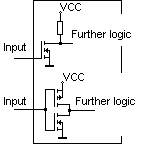
So what happens when we leave the input wire open (hanging in the air)? Most of the time you will actually destroy the IC because it will begin to conduct a high amount of current due to unclean signals. You mentioned this at the end when you touched the input with your finger. Because the GATE of the CMOSFET has a capacitance, you charged it just by touching it and it started to conduct electricity. So here's the rule.
NEVER EVER EVER LEAVE CMOS IC INPUTS OPEN
How do we fix it?
The clean way of attaching an input is to use a pull-up or pull-down resistor. These resistors are always 10k. Here's an example:
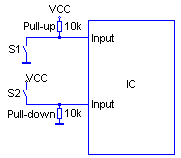
Pull-ups and Pull-downs make sure that when you don't connect anything to the IC, the input will have a defined state (it won't be "open"), and you don't risk destroying the IC due to overvoltage through static discharge. You can of course replace the switches with a transistor, or even another IC:
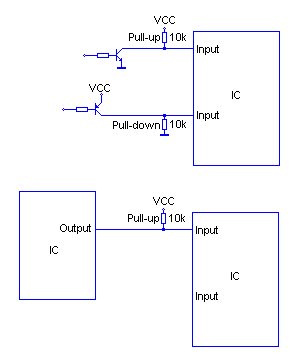
I'll explain the "connecting another IC" a little deeper, as it requires some additional knowledge for it to work properly.
What do I do with the input wires I don't need?
This:

All inputs on a CMOS IC must have a defined state, or it's possible they'll turn themselves into a small nuke cloud.
The Output
So now that we know how inputs work, let's look at the output stage of a CMOS. There are two common ways of making outputs (there are other ways, but I won't discuss them here). There's the
push-pull configuration (sometimes referred to as "totem-pole configuration"):
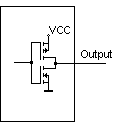
And then there's the
Open Drain configuration:
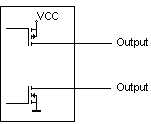
If the output is a push-pull, you don't need any pull-up or pull-down resistors. If you have an open drain output, you need the resistors to pull in the opposite direction.
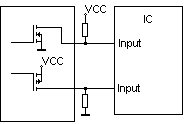
Hope that clarifies a few things for you

TheComet